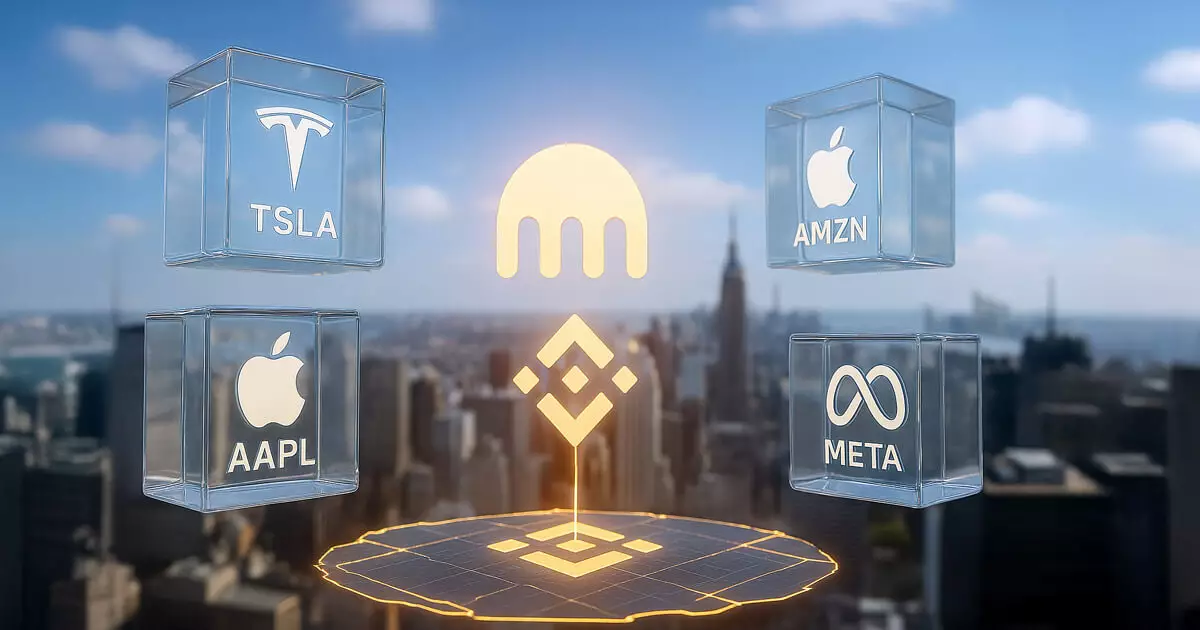The expansion of Kraken’s xStocks to Binance-backed BNB Chain marks a pivotal shift in the financial landscape. By bridging traditional equities with the decentralized realm, this move boldly challenges the outdated dominance of legacy financial institutions. Tokenized stocks like AAPLx and TSLAx, now seamlessly tradable across borders and platforms, symbolize a new era of globalized, frictionless capital mobility. Yet, beneath this veneer of innovation lies an unsettling question: does this evolution threaten the stability and reliability that traditional markets have built over decades? While proponents laud the increased liquidity and flexibility, skeptics point out that the unregulated, volatile nature of these programs could expose investors to unprecedented risks. This development underscores a fundamental debate—should the financial system prioritize innovation and accessibility at the expense of stability and oversight?
Decentralization as a Double-Edged Sword
Kraken’s vision of a “chain-neutral” market underscores a desire to break down the silos artificially erected by legacy systems. The promise is compelling: assets moving freely across multiple chains and ecosystems, instant settlement, and integration with DeFi protocols like PancakeSwap. From a libertarian perspective, this progressive view advocates for financial sovereignty, empowering individuals with greater control over their assets. However, this pursuit of decentralization also introduces vulnerabilities. Without robust regulation and oversight, these decentralized platforms risk becoming havens for manipulation, fraud, and systemic shocks. The allure of atomic settlement and programmable assets serves well in theory, but the lack of comprehensive safeguards raises questions about market integrity. As decentralized finance begins to emulate traditional markets, it must grapple with the same issues—if not more severe—of transparency, security, and systemic risk management.
The Implications for Traditional Market Giants
The relentless march of tokenization fundamentally challenges the very foundation of established exchanges like the NYSE and Nasdaq. These institutions have thrived on centralized control, with structured trading hours and custodial services that provide a sense of security and predictability. Yet, as technological innovation accelerates, their dominance appears increasingly fragile. The shift toward 24/7 trading, blockchain-based settlements, and the rise of crypto-native brokerages threaten to erode their market share and revenue streams. This transformation is not merely a technological upgrade but a paradigm shift towards a more democratized and borderless financial ecosystem. For traditional exchanges, adaptability is no longer optional but existential; failure to embrace this new multichain world may result in obsolescence. The question remains: can legacy institutions reinvent themselves fast enough to preserve relevance, or will they cede ground to decentralized protocols and innovative competitors?
The Dance Between Innovation and Caution
While the future of tokenized equities appears promising within a center-right liberal worldview—favoring innovation paired with cautious oversight—the path forward is fraught with peril. The rapid growth projected for tokenized assets, expected to reach $30 trillion by 2030, signals both opportunity and threat. It’s a classic question of balancing progress with prudence. Enthusiasts argue that these instruments democratize investment, reduce costs, and foster financial inclusion. Critics warn that insufficient regulation and oversight could lead to market manipulation, amplified volatility, and potential systemic crises. The challenge for policymakers and industry leaders alike is to strike an equilibrium—harnessing technological advancements to improve markets without compromising their integrity. Ultimately, the evolution of tokenized stocks will take shape on the edge of this fine line, demanding vigilance, adaptability, and a pragmatic approach rooted in preserving core economic principles amidst disruptive innovation.

